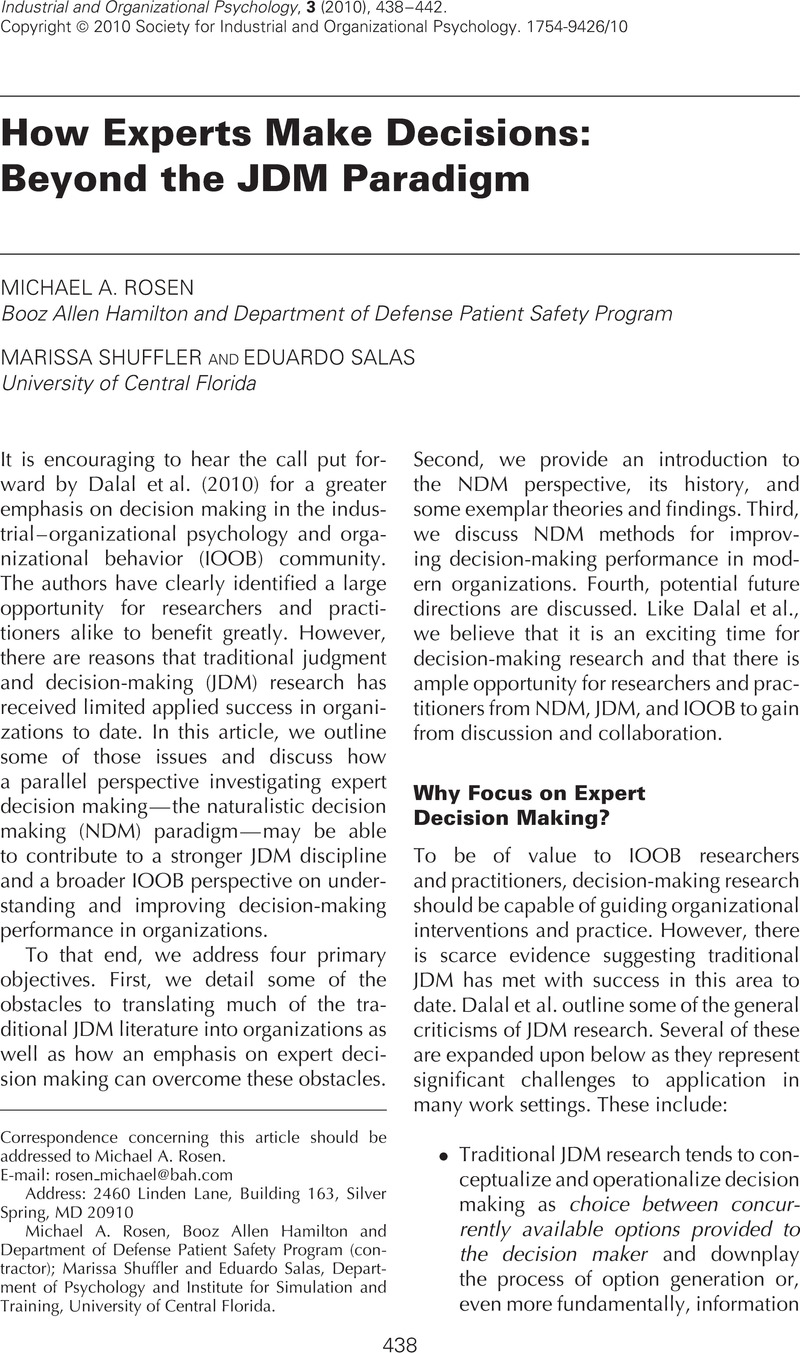Crossref Citations
This article has been cited by the following publications. This list is generated based on data provided by Crossref.
Bonaccio, Silvia
Dalal, Reeshad S.
Highhouse, Scott
Ilgen, Daniel R.
Mohammed, Susan
and
Slaughter, Jerel E.
2010.
Taking Workplace Decisions Seriously: This Conversation Has Been Fruitful!.
Industrial and Organizational Psychology,
Vol. 3,
Issue. 4,
p.
455.
Kwong, Jessica Y. Y.
and
Wong, Kin Fai Ellick
2014.
Fair or Not Fair? The Effects of Numerical Framing on the Perceived Justice of Outcomes.
Journal of Management,
Vol. 40,
Issue. 6,
p.
1558.
Wiggins, Mark W.
2014.
Differences in situation assessments and prospective diagnoses of simulated weather radar returns amongst experienced pilots.
International Journal of Industrial Ergonomics,
Vol. 44,
Issue. 1,
p.
18.
Okoli, Justin
Watt, John
Weller, Gordon
and
Wong, William B L
2016.
The role of expertise in dynamic risk assessment: A reflection of the problem-solving strategies used by experienced fireground commanders.
Risk Management,
Vol. 18,
Issue. 1,
p.
4.
Okoli, Justin
and
Watt, John
2018.
Crisis decision-making: the overlap between intuitive and analytical strategies.
Management Decision,
Vol. 56,
Issue. 5,
p.
1122.
Hurteau, Marthe
Rahmanian, Jeiran
Houle, Sylvain
and
Marchand, Marie-Pier
2020.
The Role of Intuition in Evaluative Judgment and Decision.
American Journal of Evaluation,
Vol. 41,
Issue. 3,
p.
326.
Okoli, Justin
and
Hatami-Marbini, Adel
2021.
Managing Complex Crises through the Lens of Intuitive Expertise: A Naturalistic Decision-Making Perspective.
International Journal of Mass Emergencies & Disasters,
Vol. 39,
Issue. 3,
p.
394.
Rahmani, Diyako
Jafarzadeh, Hamed
and
Hess, Alexandra Claudia
2024.
Keeping the gates closed: the effect of conflict management styles, anxiety, and technical skills on security noncompliance intention among smartphone users.
Behaviour & Information Technology,
p.
1.



